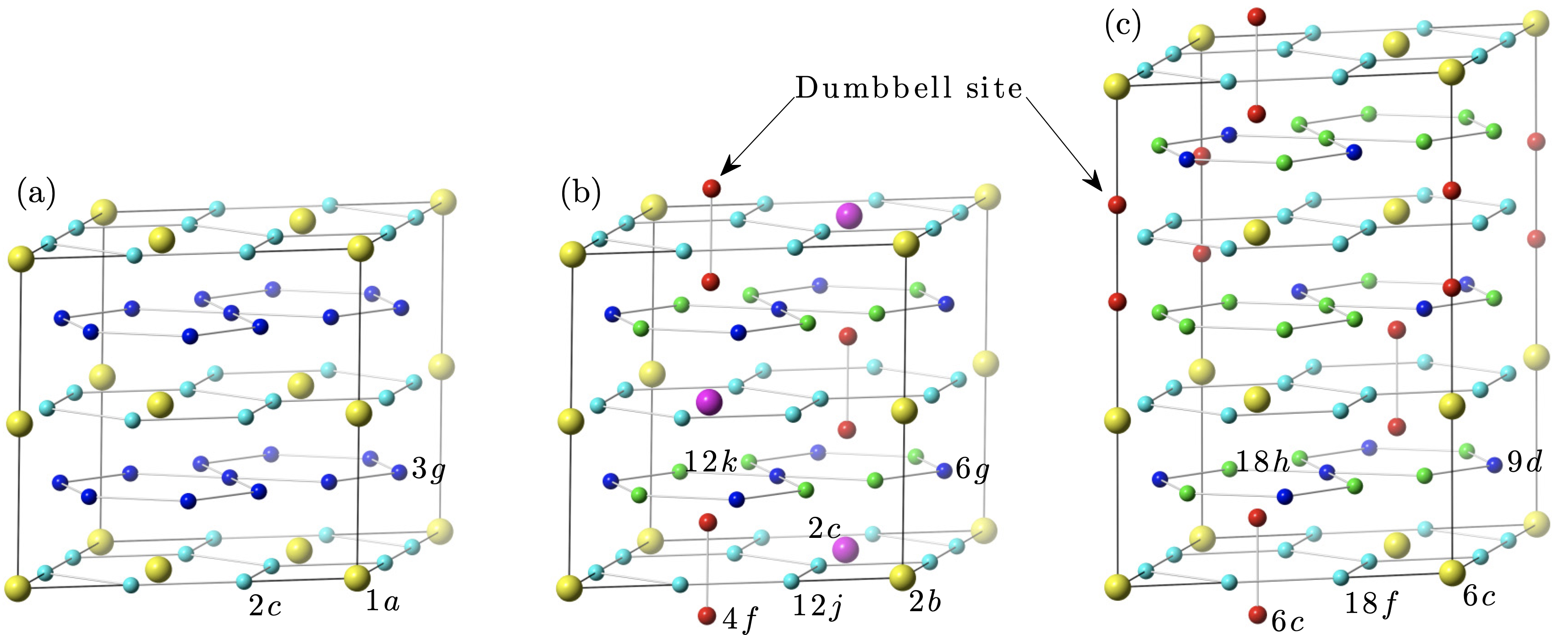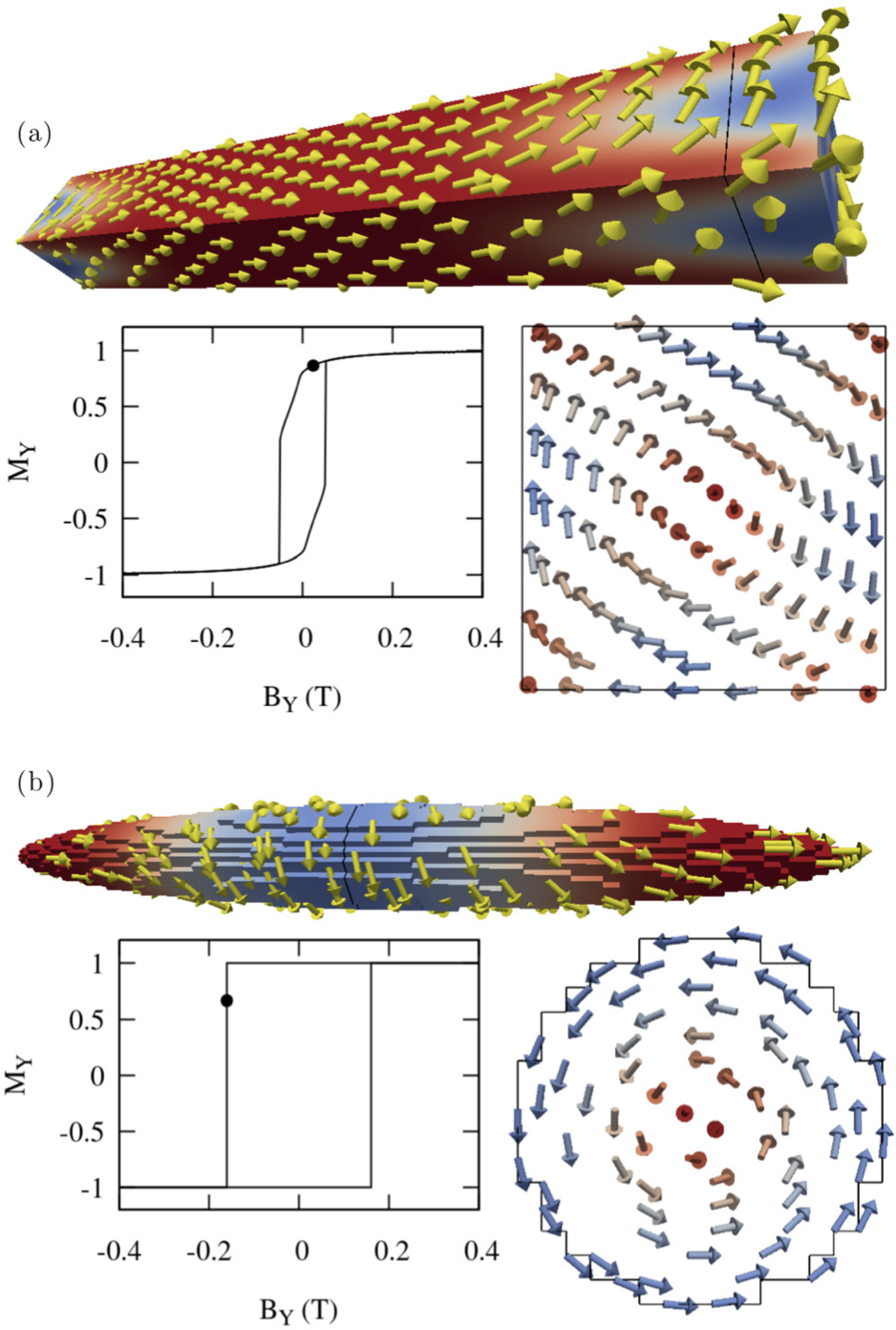1.5 Permanent Magnets
Intrinsic magnetic properties
Extrinsic magnetic properties

Figure 1.5: Schematic crystal structures of (a) CeCo\(_{5}\), (b) hexagonal H-Ce\(_{2}\)Co\(_{17}\), and (c) rhombohedral R-Ce\(_{2}\)Co\(_{17}\). Ce atoms are indicated with large (yellow or magenta colored) spheres. Co atoms are denoted by Wyckoff sites. Dumbbell (red) sites are denoted in \(R\)-Ce\(_{2}\)Co\(_{17}\) (\(4f\) sites) and in \(R\)-Ce\(_{2}\)Co\(_{17}\) (\(6c\) sites), and indicated further by arrows and label. We use larger cells for CeCo\(_5\) and \(R\)-Ce\(_{2}\)Co\(_{17}\) to compare with \(R\)-Ce\(_{2}\)Co\(_{17}\).

Figure 1.6: Simulation of alnico coercivity.
Spin structures at the initial stage of curling for isolated Fe-Co (a) square prism and (b) ellipsoid surfaces and cross-sections. The corresponding fields and magnetizations are shown on the hysteresis loops. The surface coloring visualizes the magnetization along the field direction.
In such relatively thick rods, the magnetization reversal starts by magnetization curling, for which the nucleation field is described by \[\begin{equation} H_\text{c}=\frac{2K_1}{\mu_0 M_\text{s}}-N_\parallel M_\text{s} \\ + \frac{c(N_\parallel)A}{\mu_0 M_\text{s} R^2}. \end{equation}\] Here \(K_1\) is the magnetocrystalline anisotropy constant, \(A\) is the exchange stiffness~, and the values of \(c\) are 8.666 for spheres (\(N_\parallel=1/3\)) and 6.678 for needles (\(N_\parallel=0\)).